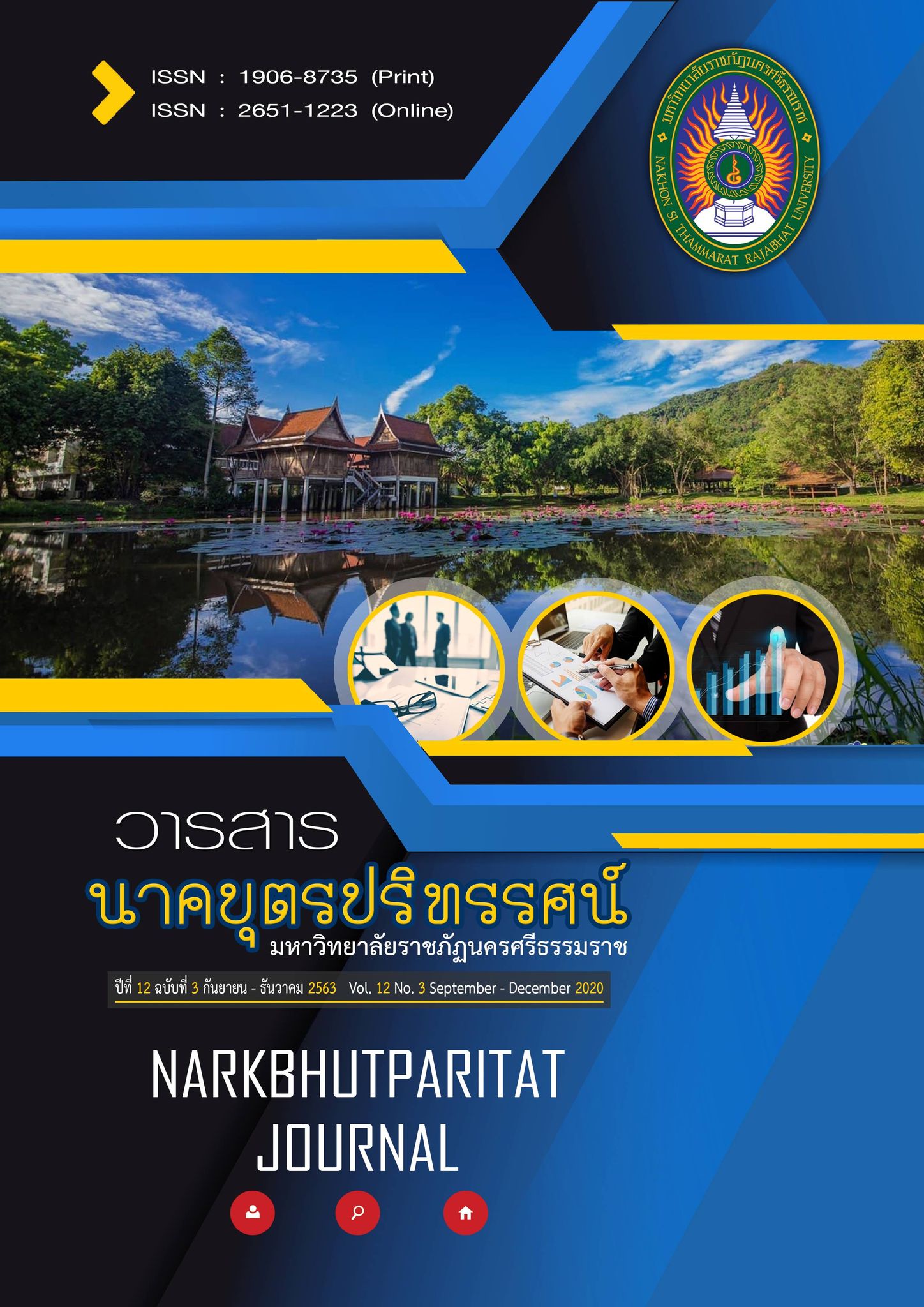Urban Land Use Planning Influencing to Urbanization In the area of Wiang Nuea Municipality, Wiang Chai District, Chiang Rai Province
Main Article Content
Abstract
This research aimed to study an urban planning that affects land use change and urbanization in Wiang Nuea Subdistrict Municipality, Wiang Chai District, Chiang Rai Province. The collected data through interviews, observations and related documents were in order to analyze the spatial phenomena. It was found that the former Wiang Nuea Subdistrict Municipality area had the overall city plan in the form of green area city plan, rural and agricultural land. In 2019, there was the 4 lane road cutting project from Chiang Saen 2 port from the Department of Rural Roads crossing through the area of Wiang Nuea Subdistrict Municipality resulting in a plan to adjust the overall city plan to be the form of yellow area city plan. The land utilization from the original is a low-density residential land caused by transportation routes in the area, resulting in the entry of external capital, rising land prices including the latent population in the community. This was in line with the urbanization concept of the Sector theory, Homer Hoyt, which describes the city's expansion along the way of transportation which connects to commercial centers and residences in other areas.
Article Details
References
Champion, A. G. (2001). A changing demographic regime and evolving polycentric urban regions: consequences for the size, composition and distribution of city populations. Urban Studies, 38,657–677.
Creutzig, F.,Bren, D. C.,Weddige, U., Fuss, S.,Beringer,T.,Gläser,A.,etal. (2019). Assessinghuman and environmental pressures of global land-use change 2000–2010. Global Sustainability, 2(e1), 1–17. https://doi.org/10.1017/sus.2018.15
Davoudi, S. (2003). Polycentricity in European spatial planning: from an analytical tool to a normative agenda. European Planning Studies, 11, 979–999.
Frenkel, A. (2004). A land-consumption model - Its application to Israel’s future spatial development. Journal of the American Planning Association, 70, 453–470.
Gihring, T. A. (1999). Incentive property taxation - A potential tool for urban growth management. Journal of the American Planning Association, 65, 62–79.
Jin S. Deng. (2011). An integrated analysis of urbanization-triggered cropland loss trajectory and implications for sustainable land management. The Cities. ScienceDirect Volume 28, Issue 2 from https://www.sciencedirect.com/journal/cities/vol/28/issue/2
Nechyba,T. J.,&Walsh,R. P. (2004).Urban sprawl. Journal of EconomicPerspectives, 18, 177–200.
Oueslati,W., Alvanides, S., & Garrod, G. (2015). Determinants of urban sprawl in European cities.Urban Studies, 52(9), 1594–1614.
Poelmans, L.,& Van Rompaey, A. (2010). Complexity and performance of urban expansionmodels. Computers, Environment and Urban Systems, 34, 17–27.
Tiebout, C. (1956). A pure theory of local expenditures. The Journal of Political Economy, 64, 416–424.
Yarnsarn, S. (2011). Urban Geography. Chiangmai: Department of geography, Faculty of social sciences, Chiang Mai University. (In Thai)
Yuzhe Wu. (2011). The impact of urbanization policy on land use change: A scenario analysis. The Cities. ScienceDirect Volume 28, Issue 2 from https://www.sciencedirect.com/ journal/cities/vol/28/issue/2


